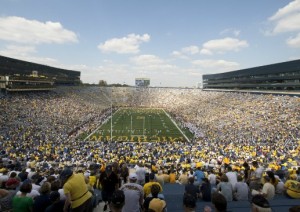The Arizona economy yielded a gross domestic product of $350 billion in 2018, 3% of which — $10.5 billion — came from the state’s tourism industry. In turn, 3.5% of Arizona’s tourism GDP — $373 million — could be traced to the four-week cavalcade of baseball that is the Cactus League.
In other words, the Cactus League plays as big of a role in Arizona tourism as tourism plays in the state’s entire economy.
The economic importance of spring training cannot be overstated. Spring training is a wide-ranging event, one that draws locals as well as visitors from around the country to nine cities and one reservation spread across the Valley — though it must be noted that Arizona’s layout is much more compact than Florida’s. Spring training is a unique asset that only these two states possess. It reliably provides a strong economic impact every year, regardless of whatever other events local sports commissions are able to secure.
Last year, however, its timing was less than ideal.
The 2020 Cactus League was shut down due to COVID-19 on March 12 after operating for 20 of its intended 30 days. Unsurprisingly, as uncertainty about the pandemic mounted, it contributed only $214 million to Arizona’s GDP — less than two-thirds its 2018 figure.
A year later, the Cactus League has started up again — despite a prior written request from city and league officials that it be delayed — and this year, rather than beginning at full strength and then shutting down abruptly, spring training is starting out at a considerable disadvantage.
Most venues are operating at about 20% of capacity — and their detailed plans only began to come out over the last several weeks, after months of uncertainty prevented potential tourists from planning trips. Teams are closing practices and autograph sessions. And of course, the local businesses that have survived the pandemic are limited in how they’re allowed to entertain guests.
All this follows a year in which demand for lodging was down 28% and airplane passengers were down 52% in Arizona.
Business journalists reporting on spring training should prepare to cover the unique issues that an event predicated on tourism faces in an era where crowds mean danger. The allure of spring training, which has always been the chance to see big-league players up close, is not necessarily present this time around. It remains to be seen to what extent the economic impact will persist.
Economists typically divide economic impact into direct, indirect and induced effects. Investigating each of these categories of spending could provide the premise for a story.
Direct spending comes from visitors. How are regular spring training attendees modifying their routines this time around? Are they traveling in smaller groups? How far in advance did they prepare their trips? Did they choose to drive rather than flying, or to seek different lodging than usual?
Indirect spending means local business-to-business transactions that occur due to the event in question. How are stadium vendors adapting to the constraints of the new spring training environment? Have concession providers tightened their menus or changed packaging? Have some contractors been cast off entirely?
Induced spending is a consequence of indirect spending: the additional money expended by employees of the businesses involved in indirect spending. This may be hardest to track, since it’s most remote from the direct economic impact, but it’s very valuable for journalists to talk to individual park workers. Are retail employees, for instance, working fewer overall hours at team merchandise stores due to social distancing restrictions? If so, how does this reduced income affect their daily lives?
Until last year’s unprecedented cancellation, spring training had been a reliable annual moneymaker for the states of Arizona and Florida. This year, the event is taking place entirely during a pandemic. It’s up to business journalists to document how this newly transformed, scaled-back spring training affects local economies.











